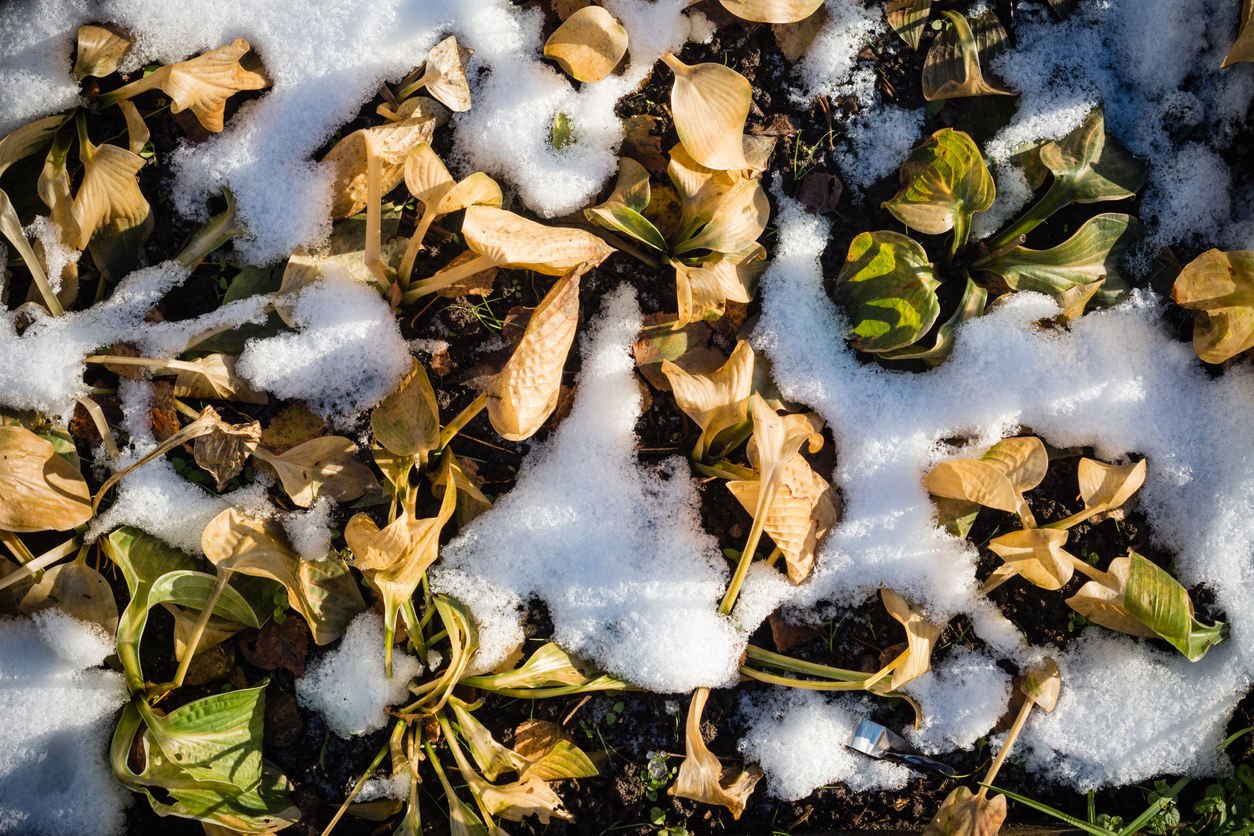Wondering what to do with your hosta plants before winter arrives? To your surprise, one of the best times to tend to your hostas is just before winter.
Besides enhancing the overall appearance of your flowerbeds, this is the best time of year to get your hostas ready for the colder months ahead. Plus, it may boost growth in the spring and summer.
There are three primary things to do to prepare hosta plants for the winter:
Cutting back and removing the leaf canopy and any remaining bloom stems.
Dividing & transplanting overgrown hostas.
Mulching the crowns in preparation for winter protection.
Below is a detailed breakdown of each of the three and some extra advice for making your hostas grow better than ever next year.
Cutting Back Hostas
Cutting back your hostas at the end of the season is one of the most important things you can do for them. It’s an essential part of maintaining the health of your flower beds and a nice aesthetic bonus.
Once the hosta’s leaves start to turn brown, snip them 1 inch above the ground. By doing this, the plant can cease wasting resources on trying to restore withering foliage. As an alternative, it will begin storing the energy for later use in the form of expanded flower size.
The longer damaged or dying leaves remain on a plant, the more energy the plant must expend to try to recover. However, once removed, the plant’s roots store energy for next year.
This is why it’s crucial to cut off the flower stalks of your hosta as soon as they complete flowering for the season; the plant can then focus its energy on producing healthy, robust leaves that will last until late fall.
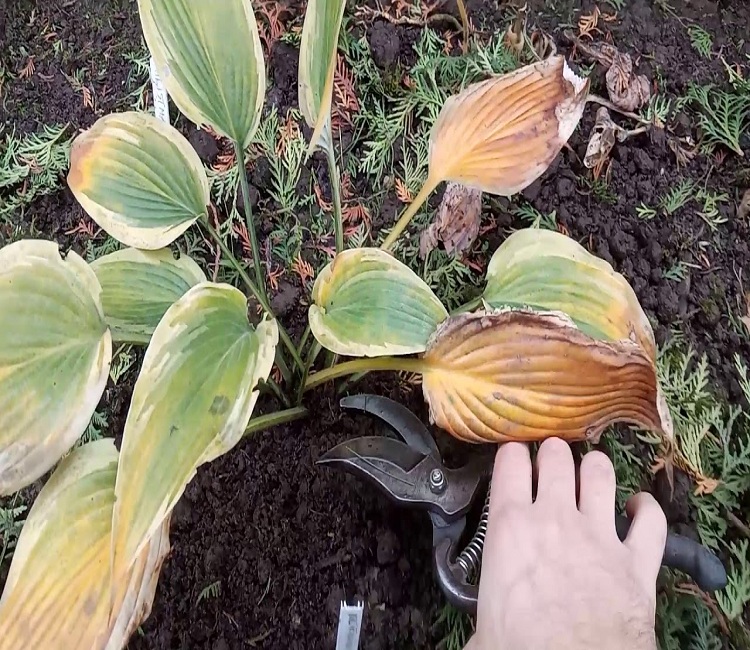
Additional Benefits
Cutting back the old foliage not only helps the hosta save energy, but it also helps keep pests and disease at bay. This coming winter and next year’s spring and summer.
Dead leaves provide refuge for a wide variety of bug species. The falling leaves not only offer pests a food source, but also a safe place to overwinter their eggs. Produces eggs that overwinter and hatch as a pest the following spring.
At last, the decomposing leaves will be able to help keep the soil hydrated and healthy. Because of this, mildew and other diseases may find it simple to establish themselves in the soil and at the plant’s base.
Unfortunately, by keeping all of the old leaves and stems in place throughout winter, disease and pests can not only survive but thrive. And the next year, both can be back to do even more damage to your plants.
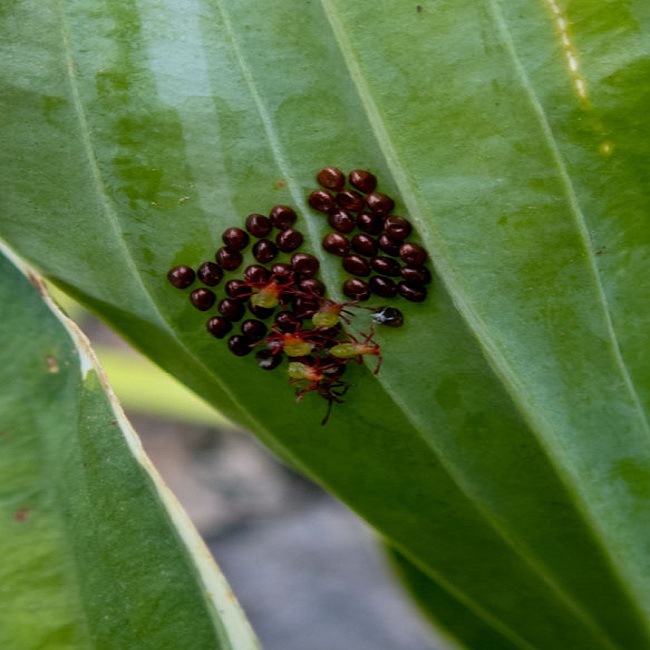
Dividing & Transplanting Overgrown Hostas
Autumn is not only a perfect season to cut your plants, but it is also the ideal time to dig out and divide overgrown hostas. While it’s possible to divide hostas at any time during the growth season, doing so in the fall has many benefits for the plants.
The first step is to wait until late autumn to see whether plants have outgrown their containers. At this time, you can get a good idea of the size of your plants and where new transplants can be useful in filling up your beds.
Moreover, if you divide your hostas in the late fall, you can ensure their immediate survival after being transplanted. They have time to adjust to the soil over the winter so that they are ready to grow at full speed in the spring. If you wait until spring, though, the plants will fall behind as they readjust to the soil.
This will ultimately lead to a plant that doesn’t develop to its full potential and may not even blossom in its first season. The same is true for summer division because the plants must renew their foliage.
Fortunately, hostas are simple to divide and transplant. The plants can be dug up, divided to the desired size, and replanted.
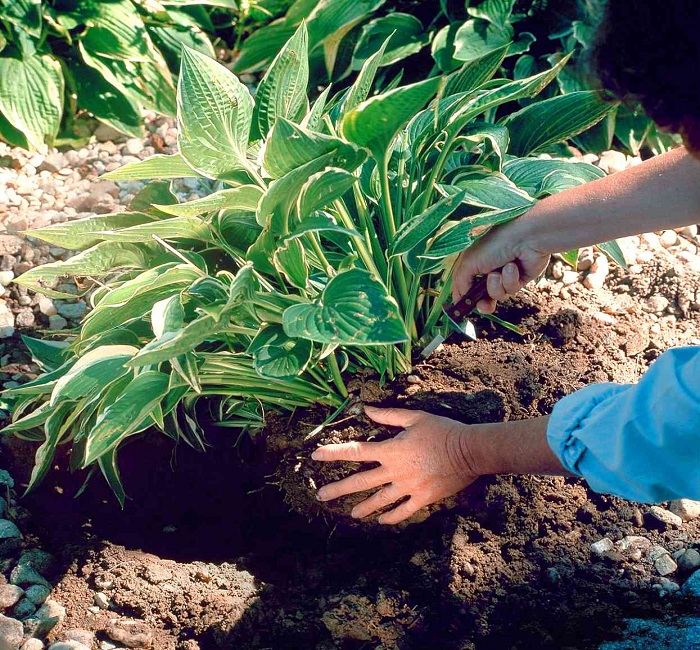
Mulching For Winter Protection
The final step before winter sets in is to give your hostas a little extra care. Particularly if you have performed any sort of experimental transplants or divisions.
Hostas are a very tough perennial, yet even they can be harmed by a harsh winter. Crowns that are not protected from the weather are at risk of frost damage, which can cause the crown to heave out of the ground or possibly kill the plant.
Mulch can be used as a shield. Spread a couple of inches of compost over the crowns for the greatest effects. Compost applied in the fall to the crowns not only acts as a barrier to prevent damage but also provides a steady release of nutrients in the early spring when the plants emerge.
Once the compost is in place, top your plants with mulch. The compost will stay in place with the help of the mulch, and it will provide an extra layer of insulation for the plant over the colder months.
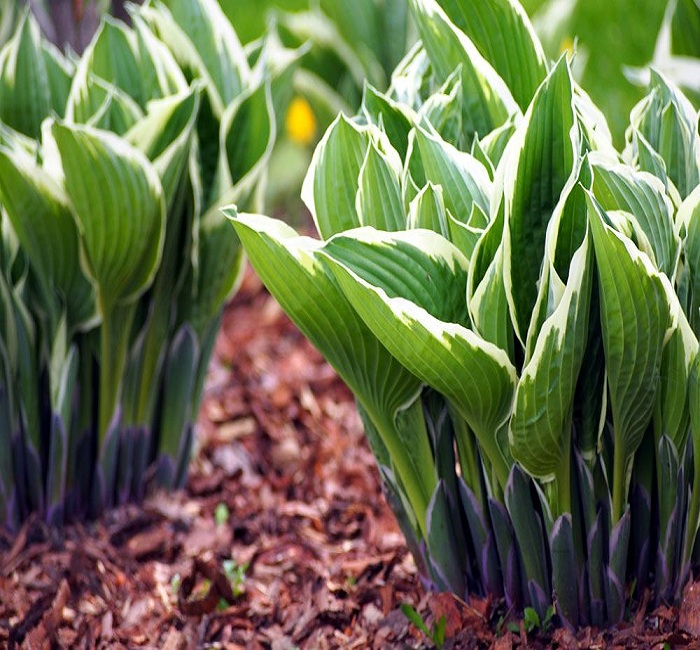
Final Hosta care tips before winter
If you have recently divided your hostas into new plants, it is recommended that you water them several times in late autumn. While the hostas are entering their dormant period, the water will help their crowns remain moist while they re-root.
Last but not least, the issue of fall fertilization is frequently raised with hostas and other perennials. Aside from providing some winter protection with a layer of compost and/or mulch, fertilizing in the fall is not recommended.
Late-fall fertilization, unfortunately, might stimulate unwelcome late-season growth that is feeble and brittle. If the plant wants to grow new leaves, it needs to grow new roots down to the crown, too. To avoid this, hold off on fertilizing until early spring.

